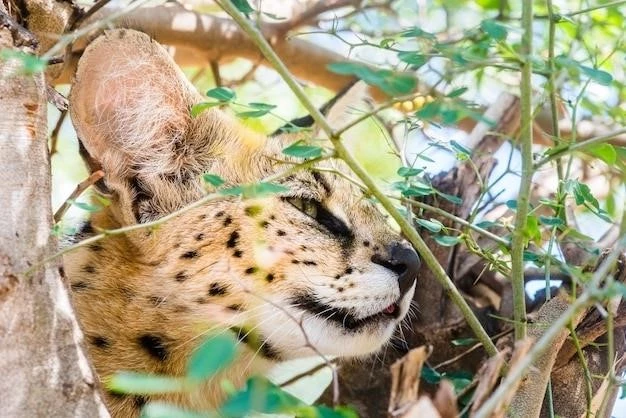Giraffes, the tallest mammals on Earth, are known for their graceful movements and striking patterns․ But their sleeping habits are perhaps even more fascinating․ While we humans clock in around eight hours of sleep a night, these gentle giants have adapted to survive and thrive on remarkably little sleep․ Let’s delve into the intriguing world of giraffe slumber․

How Much Do Giraffes Actually Sleep?
Despite their imposing size, giraffes don’t indulge in long periods of sleep․ Research suggests that on average, an adult giraffe sleeps for a mere 4․6 hours within a 24-hour period․ This sleep isn’t consecutive either․ Instead, they’ve mastered the art of the “power nap,” often dozing off for intervals as short as 5 to 30 minutes at a time․
Why Do Giraffes Sleep So Little?
Several factors contribute to the giraffe’s unique sleeping habits:
- Vulnerability to Predators: As prey animals in the African savanna, giraffes are constantly on alert for predators like lions, leopards, and hyenas․ Their large size, while advantageous for spotting danger from afar, makes them slow to get up from a lying position, leaving them vulnerable to attacks․ Shorter sleep cycles allow them to stay vigilant and react quickly if necessary․
- Dietary Needs: Giraffes are herbivores with a specialized diet consisting mainly of acacia leaves․ Digesting these leaves is a time-consuming process, requiring them to graze for long hours to obtain sufficient nutrients․ This limited time for foraging further restricts their sleeping time․
- Physiological Adaptations: Some scientists speculate that giraffes may have evolved a way to enter a deeper state of sleep for brief periods, maximizing rest within their short bursts of slumber․ This could explain how they function effectively on such minimal sleep․

How Do Giraffes Sleep?
Giraffes have adapted to sleep in both standing and lying positions:
- Standing Up: This is the most common sleeping posture for giraffes, especially for short naps․ They often rest their heads on their rumps or lean against trees for support․ This position allows them to be alert and ready to move quickly if danger arises․
- Lying Down: While less frequent, giraffes do lie down to sleep, particularly for slightly longer periods․ To do this, they fold their long legs beneath their bodies in a somewhat awkward-looking position․ However, they are quick to get back on their feet if disturbed․
Interesting Facts About Giraffe Sleep:
- Giraffes experience REM sleep, a deep sleep stage associated with dreaming, but these periods are incredibly brief, lasting only a few minutes․
- Younger giraffes tend to sleep slightly more than adults, possibly because they are still growing and developing․
- Even in zoos, where predators are not a threat, giraffes retain their natural sleep patterns, demonstrating the deeply ingrained nature of their sleep adaptations․
Conclusion
The sleeping habits of giraffes are a testament to the incredible adaptability of nature․ By evolving to thrive on minimal sleep, these magnificent creatures demonstrate a remarkable ability to balance their physiological needs with the demands of their environment․ Their short, intermittent sleep cycles, coupled with their ability to sleep both standing and lying down, ensure their survival in the African wilderness․ So, the next time you think about catching a few extra hours of sleep, remember the giraffe – a gentle giant that redefines the meaning of “power napping”!










